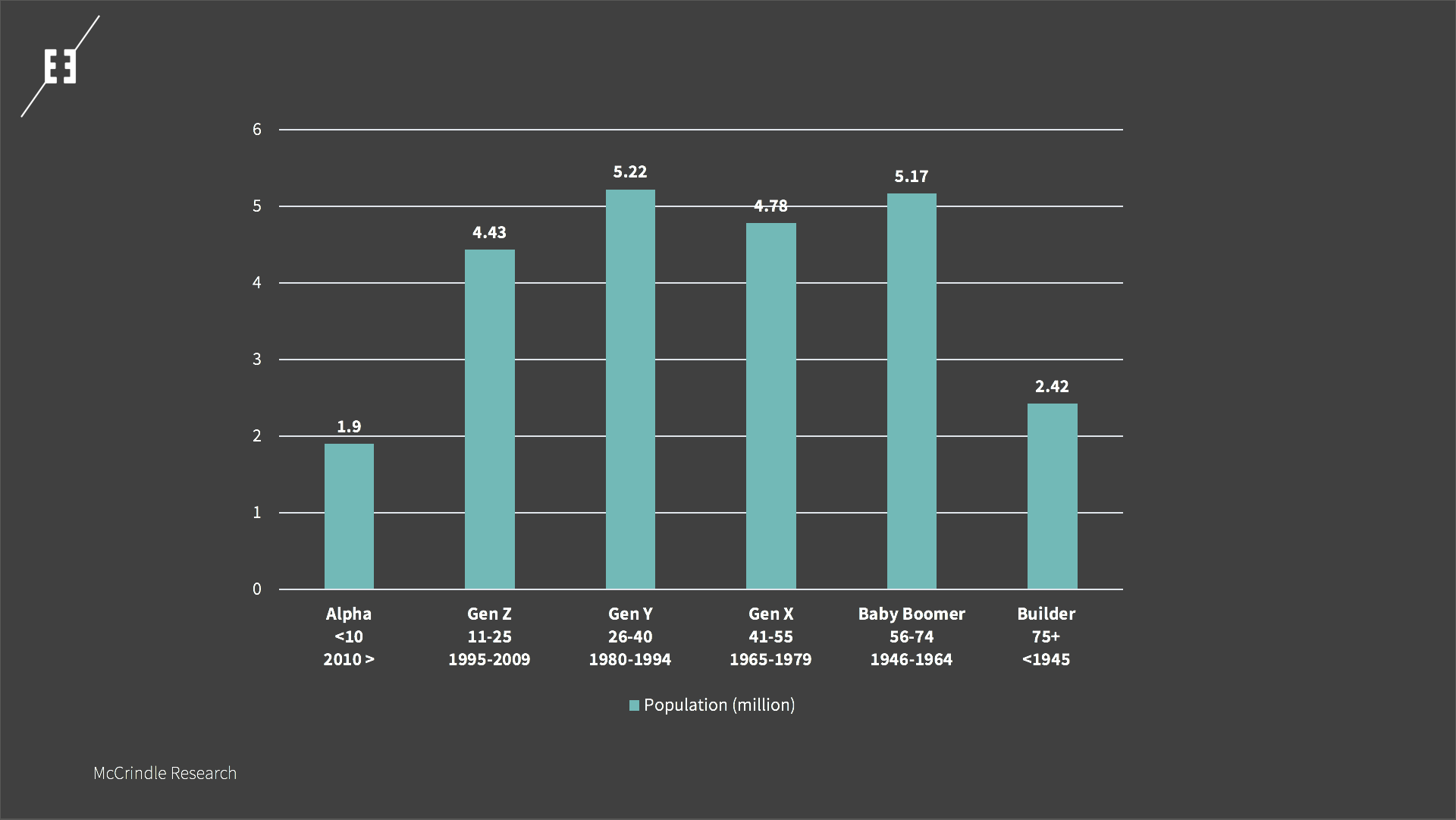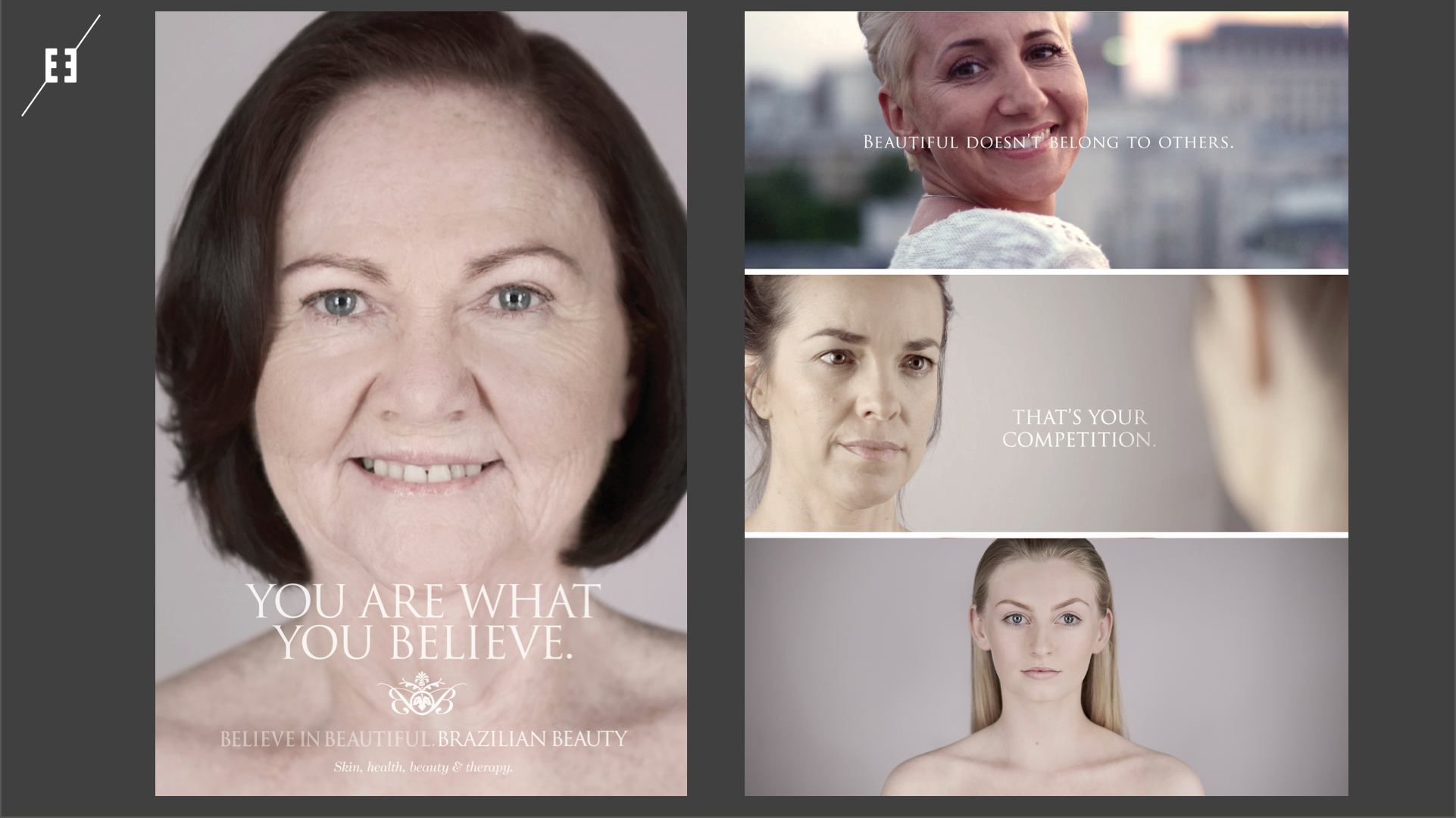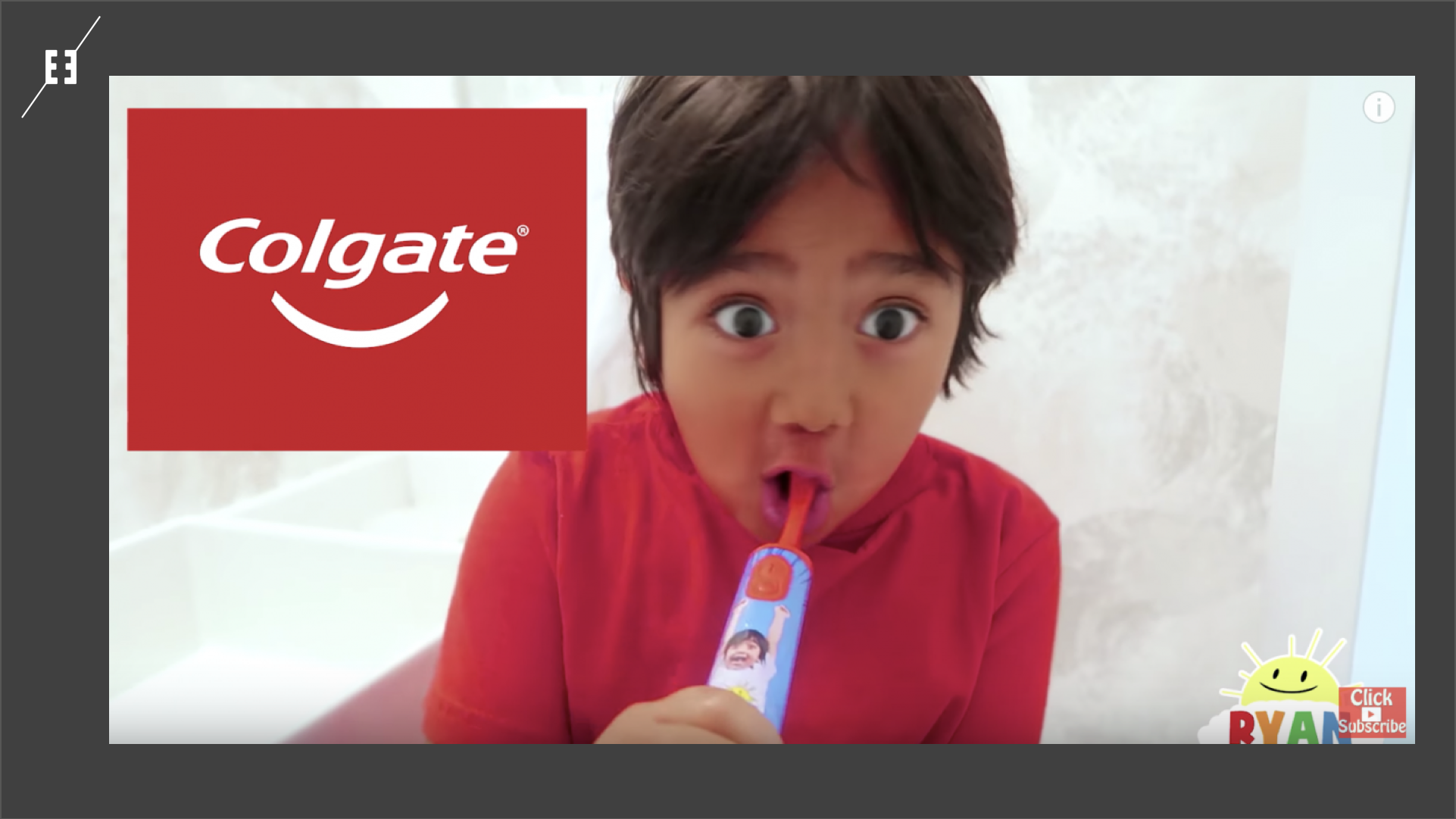Generational Nuances: How to make your ads work harder

Kym Vercoe, General Manager, Engine Group
04/08/2020
The one thing we all have in common is we’re all different.
Each generation consumes, thinks and engages quite differently so there’s a real chance of a communication gap if you try to be too homogenous with your messaging. The trick is your communication needs to be tailored to the needs of each specific generational group if you truly want to connect.
And the thing is, you can’t force them to think like you either. To create effective communications and elicit the right response from your audience, you need to speak their language and not insist that they speak yours.
It matters you get this right because if the audience is older or younger than you, they will think and respond quite differently. Including those folks in your own organisation who have to sign off on the idea at some point too.
So, although the generational splits are a bit of a generalisation and not an exact science, it’s particularly helpful to keep these nuances in mind when you’re trying to review and decide on the creative you want to take to market.
Generation who?
Not to confuse things, but depending on which behavioural scientist or demographer you talk to, they will reference the generational cohorts a little differently from one another.

At Engine, we work from the age splits determined by Australian social researcher and demographer Mark McCrindle. But it’s important to note other people split it a little differently e.g. McCrindle defines Gen X as 1965-1979 whereas Roy Morgan base theirs on 1961-1975 and renowned USA researchers Pew use 1965-1980.
In a way, you can think of them being kind of like star signs – you can be on the cusp of a couple and they’re more of a guideline than hard and fast rules. But they do give a reasonable insight as to how the different cohorts respond and can be extremely helpful when you’re briefing your agency.
The cohorts we’ll talk about here are from Baby Boomer (74 years) through to Generation Alpha (10 years) and all the information is Australia-centric to keep it relevant to this market.
Inside the Generations – From Baby Boomers to Alphas

Baby Boomers: 1946-1964 (56-74 years old)
Learning: They prefer it to be more formal and via one-way communication.
Appeal: Sell to them. They love a sales spiel and feel very comfortable with a ‘tell me and I’ll do it’ approach.
Messages: Show comparisons or demonstrate what they need to know. They’re happy to see a lot of detail and don’t mind being given instruction.
Technology: These guys are digital immigrants, online doesn’t come naturally to them. They’re the most on-guard of the generations, so are least likely to share their data online, being much more engaged with traditional media.
Slogan: ‘Don’t change it if it’s not broken’ – brand loyal and reassured by consistency in messaging, they’re the least comfortable with change (changing packaging artwork, new messages, changing your Facebook UX messes most with this group).
Insight: Take advantage of their loyalty; comparisons work; go traditional.

Engine case study: For Brazilian Beauty, the perception was the brand was only for younger people seeking a specific type of waxing method, so they needed to reposition to better connect with a broad audience of women to “believe in beautiful” – a message that we found resonated across the cohorts, but through the use of insightful photography, the visuals were empathetic for each specific audience.
Generation X: 1965-1979 (41-55 years old)
Learning: They prefer a dialogue, more two-way communication.
Appeal: They question information, so you’ll appeal to them best by providing evidence. But don’t go overboard with information – they want you to get to the point.
Messages: Visually driven, they are quite anti-ad. Don’t try to ‘sell’ this cohort.
Technology: Digital adaptives, online is a little easier for this group than the Baby Boomers but it’s still not completely natural. 50% of Gen Xers will interact with companies on social media (unlike the Baby Boomers) but less than a third engage with advertisers on this platform.
Slogan: “Don’t oversell me” – they’ll see through veiled attempts at selling them something, so best to be upfront or appeal to their true sense of anti-ad.
Insight: Get to the point; note their need to question things.

Engine case study: Targeted at Gen X industry, it was important to not ‘sell’ to this audience but provide the proof as succinctly and clearly as possible – fire ants spread like wildfire, so it’s up to you to make sure they don’t.
Generation Y (Millennials): 1980-1994 (26-40 years old)
Learning: Very interactive and multi-modal – they’ll be watching catch-up TV, be texting friends on their mobile phone, and be researching the latest restaurant on their tablet all at the same time. With a 12 second attention span, you need to get to the point and use imagery/memes/emojis to connect.
Appeal: Millennials genuinely want to connect with folks that have purpose and treat them as individuals; that do things for the greater social good. But whatever you do, don’t try to sell them – they like this even less than Gen X.
Messages: Experiential is good. Let them immerse themselves to understand your offer. Their number one priority is travel (rather than accumulating possessions) so they’re more about Instagrammable experiences. They don’t want ads, they want stories and they look for referrals and reviews.
Technology: Digital natives, online is normal. However, they’re less likely to share a banner ad, but will go to an experiential event. Content marketing works for this cohort as does social and online advertising.
Slogan: “Individualise me” – what they want is for it to be about them.
Insight: Short, direct, personalised messaging. Be authentic.

Engine case study: Targeted at the Gen Y audience, which our research uncovered as being ‘experience collectors’, it was important for Vanuatu to create executions that spoke directly to their triggers. While a few executions were written specifically for Gen X and the Baby Boomers to ensure they were picked up in the messaging, on the whole this campaign had a great response because it met the expectations of its primary target cohort.
Generation Z: 1995-2009 (11-25 years old)
Learning: ‘Try and see’ rather than ‘sit and listen’ like Gen X. With an 8 second attention span, information needs to be bite-sized and immersive.
Appeal: It’s all about being validated – so, one-way messaging doesn’t work. They’re interested in the ‘how’ and seek immediate beneficial experiences, so you can appeal to them via online ads, influencers (especially micro-influencers) and reviews. They like personalised products, are male/female agnostic and are the most gender fluid of all the generations. Their number one priority is to buy a home, so they take less risks than their Gen Y counterparts. Interestingly they’re not really influenced by loyalty programs – it’s more about the experience. Authenticity counts for Gen Z, with 63% preferring to see ‘real people’ in ads versus only 37% of Gen Y.
Messages: Socially conscious and altruistic, so be sincere about your social responsibility.
Technology: Digital integrators, online comes naturally to them and they’re using most of the available apps out there (and really not liking the fact that mum is on TikTok with them).
Slogan: “Build my brand” – they create acceptable personas to project outwards.
Insight: Short messages with simple imagery; 8 seconds; be unique; content rather than ads/videos; Online ads essential to reach + OOH.

Engine case study: James Cook University’s ‘Make Life Matter’ campaign tapped into the insight that university is an adventure. It’s a fresh start and a unique opportunity to grow, follow your passions, find your calling and make life matter. For Gen Z this really speaks to their need for validation.
Generation Alpha: 2010+ (0-10 years old)
Learning: Rule breakers, they don’t conform to what we know as ‘normal’ learning. They easily adapt to messaging coming from any channel and expect it in very bite-sized pieces.
Appeal: Tablets have been in their hands since they were born so they’re highly visual in what appeals. They have had an abundance of choice and fast delivery from the outset, so patience is not a virtue here and they expect to have options.
Messages: Need to be image based and this cohort genuinely believes they can make a difference.
Technology: Digital screenagers, online is second nature. With apps being introduced in 2008, they know nothing different. They’re highly attuned to YouTube where they’ve been playing for years.
Slogan: “Connect me” – they appreciate the notion of interconnectivity.
Insight: Very short messages; highly visual.

With influencers like 8yr old Ryan from Ryan’s World out there doing product reviews (who incidentally earned $26 million last year), it’s little wonder Gen Alpha is all about the visual influencer!
The generational challenge
If they don’t understand the way you speak, speak the way they understand
The challenge is truly understanding who you are targeting so you can uncover the key motivators and barriers before trying to share your messaging – the generations clearly engage quite differently.
You need to engage with your audience on their level because if you don’t, you’ll miss the change to connect. On an emotional level and you won’t cut through what’s happening elsewhere in their lives. It’s about getting them to trust you in order to affect behaviour.
Hot tips for writing a great brief

HOT TIP 1: Mine for insights
Do your research, know the motivators and barriers of your specific audience and work out exactly what behaviour you want to target.
HOT TIP 2: Separate yourself
It’s about your audience, not you. And that’s also true of your own internal audience who are going to sign off on the creative that you’re seeking approval for. What generation are they? Can you position your own spiel to them in a manner that lets them be part of the journey and buy into the messaging, even though none of you might be in the same generational audience?
HOT TIP 3: Be explicit
The age group 25-54 spans 3 generations! And even within a generation the age range is pretty broad. Gen Y is 26-40, Gen Z 11-25 – so, keep in mind an 18 year old is going to think quite differently to an 11 year old! You need to be explicit and be open to running a few different messages or visuals in market to enhance your chances to connect.
HOT TIP 4: Don’t fake it
Authenticity matters. You can’t fake ‘cool’, it’s just awkward. Gen Z will spot you a mile away. Baby Boomers don’t want to be patronised. You need to invest in an agency whose copywriters know how to turn the right phrase.
The wrap – be mindful of the generational nuances:
If you’re not sure, your agency is here to help you work this out, but the key is to –
- Mine the research
- Think like them
- Be explicit
- Be authentic
Click here to watch our webinar on this topic.
At Engine, we help our clients achieve their goals through lots of collaboration, drawing on the research, mining it for insights – including defining and uncovering the nuances of the audience – and a whole lot of clever back-end thinking to create serious positive change.
